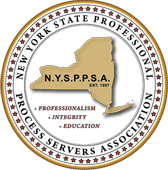 If you’re involved in a lawsuit, legal investigation or audit, you might find yourself lost in the legalese terms you hear in the process. While these things seem like second nature to an attorney, they can easily be misconstrued by someone without a legal background. Electronic discovery is one of those terms that sounds relatively straightforward, but implies a host of possible actions. Here are some basics about the process.
If you’re involved in a lawsuit, legal investigation or audit, you might find yourself lost in the legalese terms you hear in the process. While these things seem like second nature to an attorney, they can easily be misconstrued by someone without a legal background. Electronic discovery is one of those terms that sounds relatively straightforward, but implies a host of possible actions. Here are some basics about the process.
Electronic discovery, ediscovery, and ESI
Electronic discovery is interchangeable with e-discovery, ediscovery, eDiscovery, or e-Discovery, and may be used as any of these in documentation or verbally.
Electronically-Stored Information (ESI) represents the “electronic” part of electronic discovery. ESI encompasses everything from emails and documents to social media posts, website content, recorded videos and voice files. The “discovery” part of electronic discovery refers to the identifying, collecting, producing and ultimately preserving ESI relevant to the case at hand.
Electronic Discovery Reference Model
Once ESI is produced, all that data must be processed, analyzed and categorized before it is reviewed for its relevancy. Finally, the relevant information is produced and presented in necessary formats for the courts. This process is what is called the Electronic Discovery Reference Model (EDRM).
ESI Requires a Large Scope
As one can imagine, the scope of ESI for a single person can be quite large given the amount of electronic technology people interact with daily. For a company, the amount of relevant ESI can be immense. Processing and analysis may require specialized electronic tools and IT professionals to streamline the process and narrow the amount of ESI that must be reviewed.
ESI and the Litigation Process
To reflect the importance of ESI to litigation and governance, United States federal court systems amended The Federal Rules of Civil Procedure (FRCP) in 2005 to include rules regarding ESI. Given the sheer volume of ESI available, the FRPC was later amended in 2015 for procedural expediency.
However, the most critical takeaway regarding eDiscovery has to do with the preservation of data. Relevant ESI cannot be deleted, modified or updated once litigation or audit are underway.
Reliant Court Services is your top choice for process serving in New York City. Contact us today to learn more!




